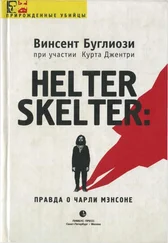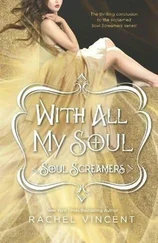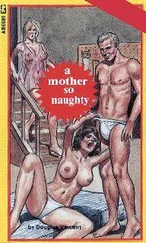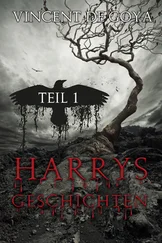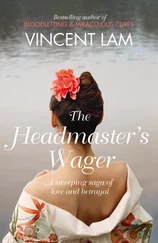On redirect I asked each: “Are you aware that testifying in court is not a prerequisite to collecting the money?” Objection. Sustained. But the point was made.
The letters Susan Atkins had written to her former cellmates, Ronnie Howard, Jo Stevenson, and Kitt Fletcher, were very incriminating. Although I was prepared to call a handwriting expert to testify to their authenticity, Shinn, in order to save time, stipulated that Susan had written them. However, before they could be introduced in evidence, we had to “Arandize” them, excising any references to Atkins’ co-defendants. This was done in chambers, outside the presence of the jury.
Kanarek fought to exclude almost every line. Disgusted at his constant objections, Fitzgerald complained to Older: “I don’t have the rest of my life to spend here.” Older, equally disgusted, told Kanarek: “I would suggest that you use a little more discretion and not try to clutter up the record with motions, objections, and statements which any ten-year-old child can see are either nonsense or totally irrelevant…”
Yet time and again Kanarek pointed out subtleties the other defense attorneys missed. For example, Susan had written Ronnie: “When I first heard you were the informer I wanted to slit your throat. Then I snapped that I was the real informer and it was my throat I wanted to cut.”
You don’t “inform” on yourself, Kanarek argued; you “confess.” This implied that other people were involved.
After nineteen pages of argument, much of it very sophisticated, we finally edited this particular section to read: “When I first heard you were the informer I wanted to slit your throat. Then I snapped that it was my throat I wanted to cut.”
Kanarek wanted the line “Love Love Love” excluded from the Stevenson letter because “it refers to Manson.”
THE COURT“It sounds more like Gertrude Stein.”
Since the “Love” references were among the few favorable things in Susan’s letters, Shinn fought to retain them, remarking, “What do you want to do, make a killer out of her?”
LIZ, SINATRA ON SLAY LIST
The Los Angeles Herald Examiner broke the story on October 9, in an exclusive article bearing the by-line of reporter William Farr. Learning the night before that the story was going to appear, Judge Older again ordered the windows of the jury bus covered so the jurors couldn’t see the headlines on corner newsstands.
Farr’s article contained direct quotes from the Virginia Graham statement, which we had turned over to the defense on discovery.
Questioned in chambers, Farr declined to identify his source or sources. After observing that under California law he could not order the reporter to do so, Older excused Farr.
It was obvious that one or more persons had violated the gag order. Older, however, did not press the issue, and there, it appeared, the matter rested. There was no indication at this time that the issue would eventually become a cause célèbre and result in the jailing of Farr.
Prior to his questioning by Older, Farr told Virginia Graham’s attorney, Robert Steinberg, that he had received the statement from one of the defense attorneys. He did not say which one.
Gregg Jakobson was an impressive and very important witness. I had the tall, modishly dressed talent scout testify in detail to his many conversations with Manson, during which they discussed Helter Skelter, the Beatles, Revelation 9, and Manson’s curious attitude toward death.
Shahrokh Hatami followed Jakobson to the stand, to testify to his confrontation with Manson at 10050 Cielo Drive on the afternoon of March 23, 1969. For the first time the jury, and the public, learned that Sharon Tate had seen the man who later ordered her murder.
In Rudi Altobelli, Kanarek finally met his match. On direct examination the owner of 10050 Cielo Drive testified to his first encounter with Manson at Dennis Wilson’s home, and then, in considerable detail, he described Manson’s appearance at the guest house the evening before he and Sharon left for Rome.
Extremely antagonistic because Altobelli had refused him permission to visit 10050 Cielo Drive, Kanarek asked: “Now, presently, the premises on Cielo Drive where you live are quite secure, is that correct?”
A.“I hope so.”
Q.“Do you remember having a conversation with me when I tried to get into your fortress out there?”
A.“I remember your insinuations or threats.”
Q.“What were my insinuations or threats?”
A.“That ‘We will take care of you, Mr. Altobelli,’ ‘We will see about you, Mr. Altobelli.’ ‘We will get the court up at your house and have the trial at your house, Mr. Altobelli.’”
Altobelli had told Kanarek that if the Court ordered it, he would be glad to comply. “Otherwise, no. It is a home. It is not going to be a tourist attraction or a freak show.”
Q.“Do you respect our courts of law, Mr. Altobelli?”
A.“I think more than you, Mr. Kanarek.”
Despite defense objections, I had succeeded in getting in perhaps 95 percent of the testimony I’d hoped to elicit through Jakobson, Hatami, and Altobelli.
With the next witness, I suddenly found myself in deep trouble.
Charles Koenig took the stand to testify to finding Rosemary LaBianca’s wallet in the women’s rest room of the Standard station in Sylmar where he worked. He described how, on lifting the top of the toilet tank, he’d seen the wallet wedged above the mechanism, just above the waterline.
Kanarek cross-examined Koenig at great length about the toilet, causing more than a few snickers among spectators and press. Then I suddenly realized what he was getting at.
Kanarek asked Koenig if there was a standard procedure in connection with servicing the toilets in the rest room.
Koenig replied that the Standard station operating manual required that the rest room be cleaned every hour. The bluing agent, which is kept in the tank of the toilet, Koenig further testified, had to be replaced “whenever it ran out.”
How often was that? Kanarek asked.
As “lead man,” or boss of the station, Koenig had not personally cleaned the rest rooms, but rather had delegated the task to others. Therefore I was able to object to this and similar questions as calling for a conclusion on Koenig’s part.
Fortunately, court then recessed for the day.
Immediately afterward I called LAPD with an urgent request. I wanted the detectives to locate and interview every person who had worked in this particular station between August 10, 1969 (the date Linda Kasabian testified she left the wallet there) and December 10, 1969 (the date Koenig found it). And I wanted them interviewed before Kanarek could get to them, fearing that he might put words in their mouths. I told the officers: “Tell them, ‘Forget what the Standard station operating manual says you should do; forget too what your employer might say if he found you didn’t follow the instructions to the letter. Just answer truthfully: Did you personally, at any time during your employment, change the bluing agent in that toilet?’”
To replace the bluing agent, you had to lift the top off the tank. Had anyone done so, he would have immediately seen the wallet. If Kanarek could come up with just one employee who claimed to have replaced the bluing agent during that four-month period, the defense could forcefully contend that the wallet had been “planted,” not only destroying Linda Kasabian’s credibility as to all of her testimony, but implying that the prosecution was trying to frame Manson.
Читать дальше

